Abstract
Internationally, the debate on aims for occupational health policy is expanding its horizons. Included among the issues are not only concerns about safety for workers, but also for their progeny. Equality among the sexes is also assuming a prominent position. In several countries, existing and proposed legislation already considers these matters. In the course of this article it is argued that this legislation and its implementation are inadequate. There are several reasons for this. Firstly, what constitutes health risks for workers exposed to chemical substances is subject to different interpretations. This is further complicated when one includes risks to reproductive function and to the progeny: the reproductive risks of toxicity. The different interpretations of the concepts of safety and equality are also discussed. There are differences in regulations and in standards about whether or not safety factors should be used when knowledge is uncertain. The operation of reasonable measures with a generic or sex specific policy also differs. Secondly, the current occupational exposure limits are set too high. These aspects are considered and it is probable that the policy aims should be made more specific. An elaborated approach that includes the "precautionary principle" in safety standards is proposed. To advise employers in their role as managers of reproductive risks of toxicity, a recently developed system for occupational health and safety services is described. This system is based on two criteria: effectiveness and reasonableness of proposed measures. The effectiveness criterion includes the precautionary principle; the reasonableness criterion includes equal rights and opportunities for men and women. Finally, a supportive governmental policy that is consistent with the most recent international development is recommended.
Full text
PDF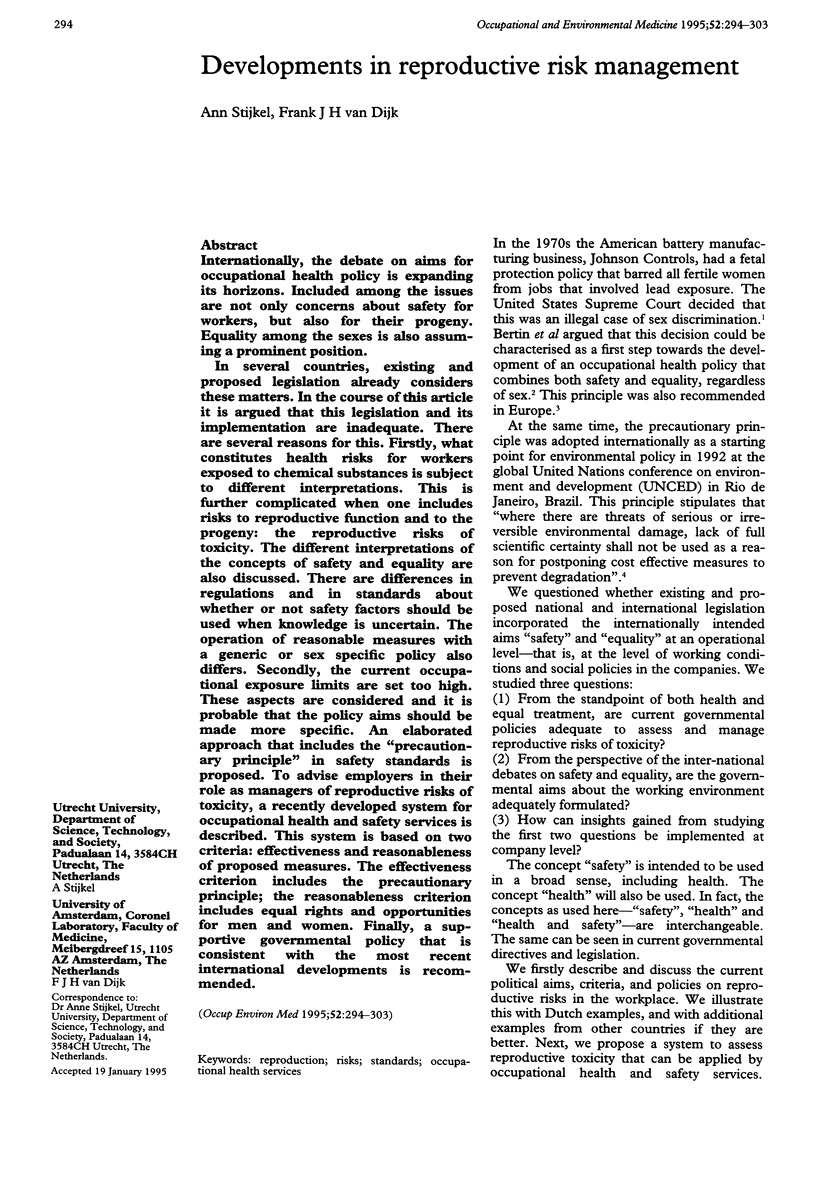
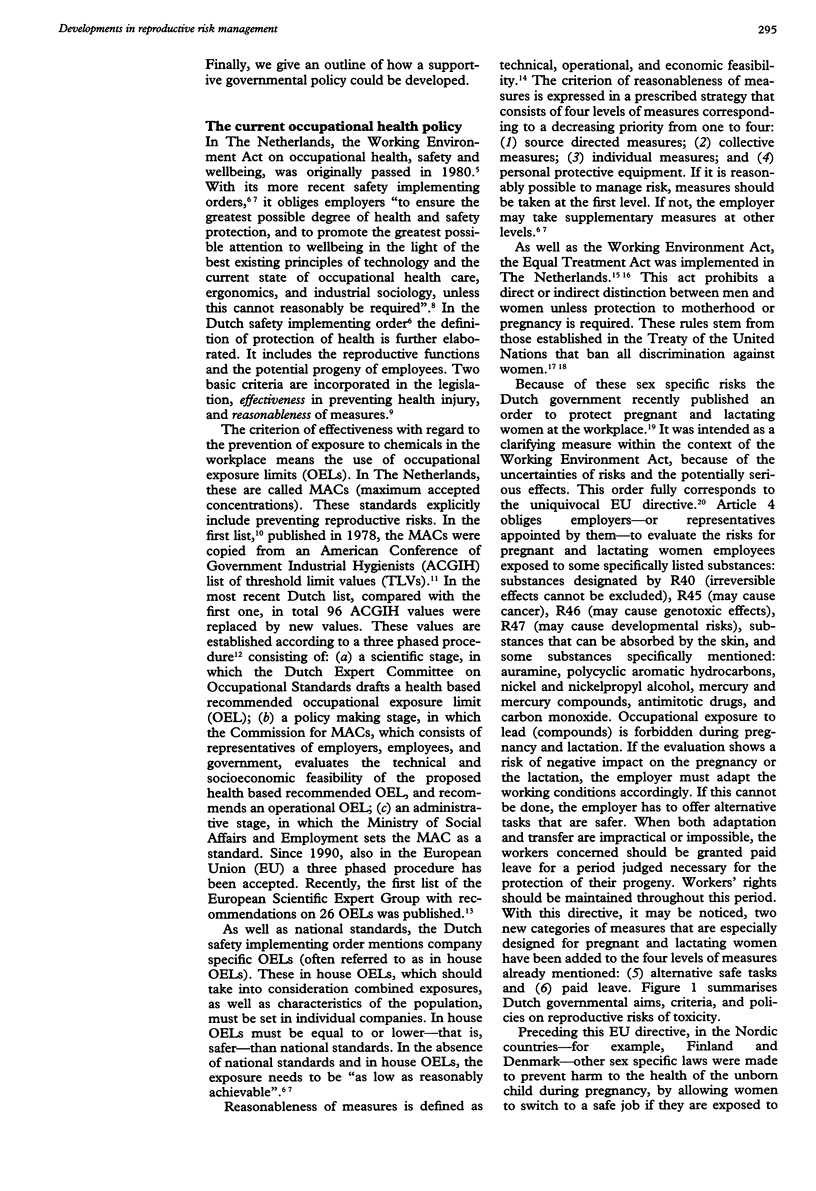
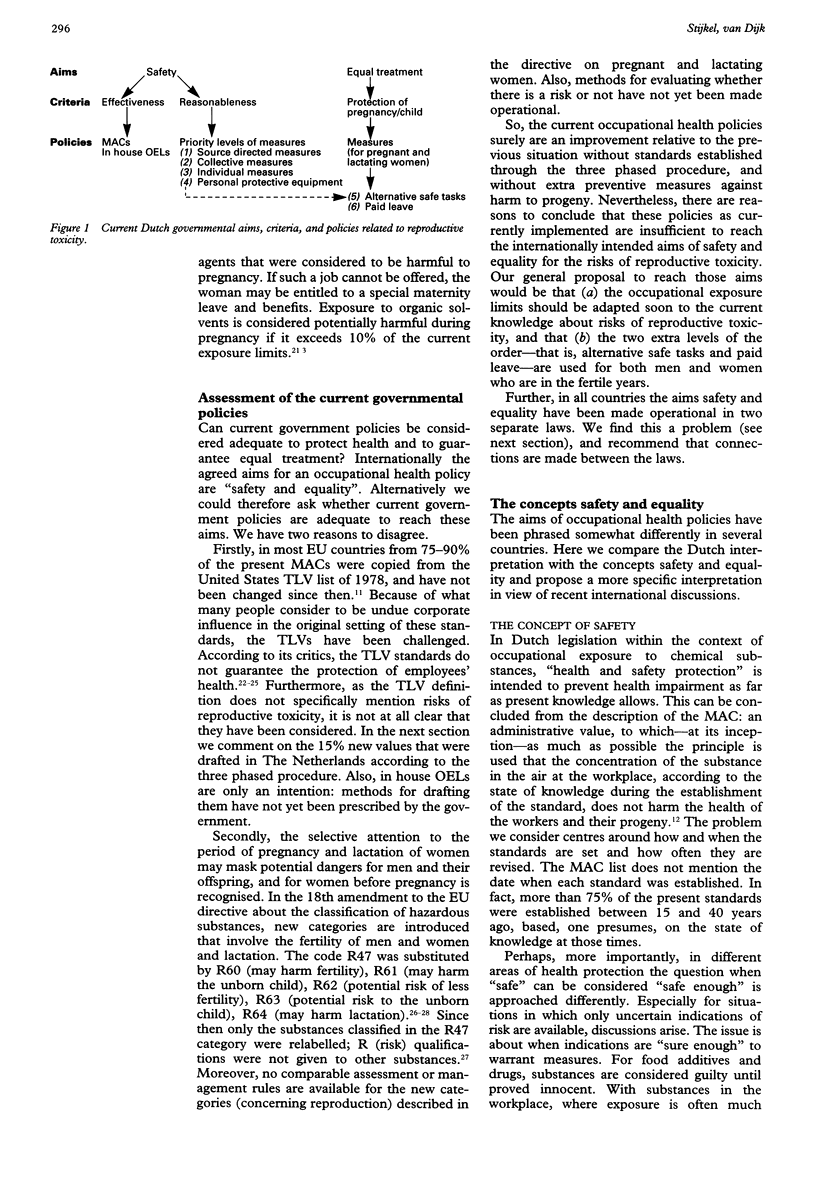
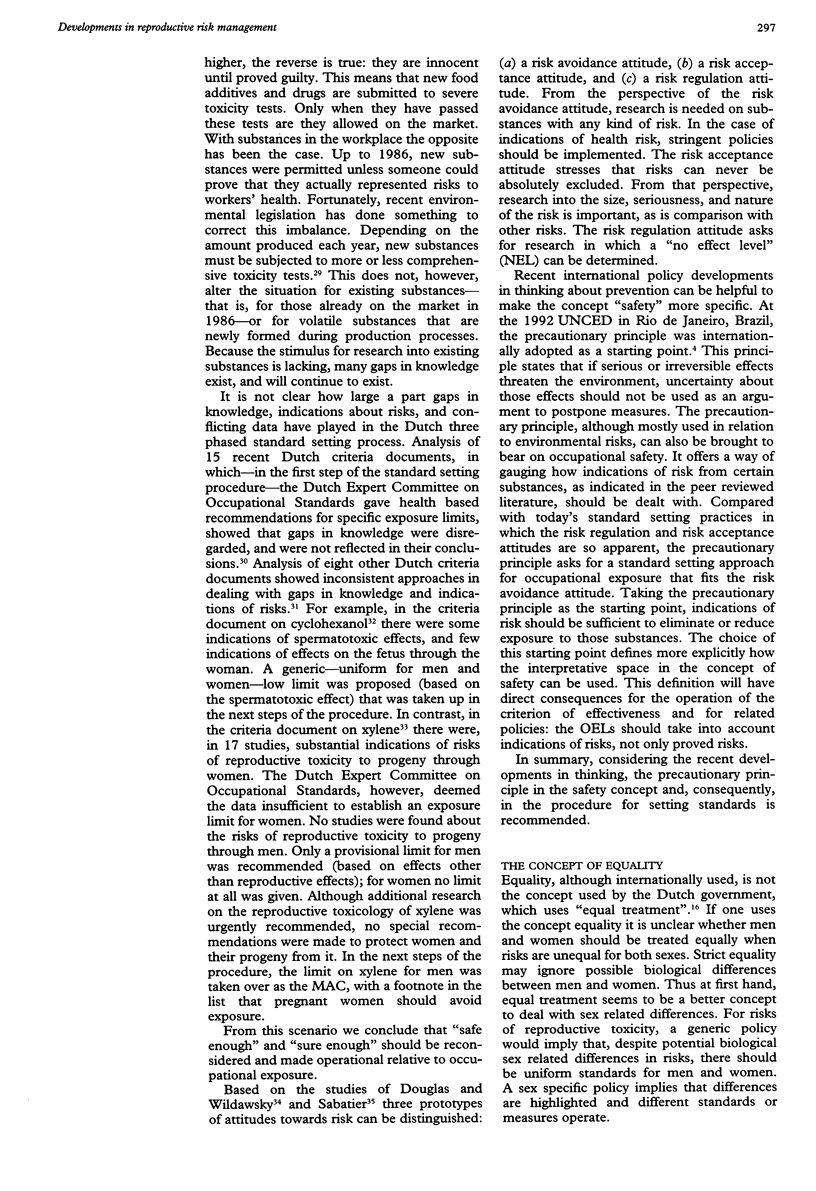
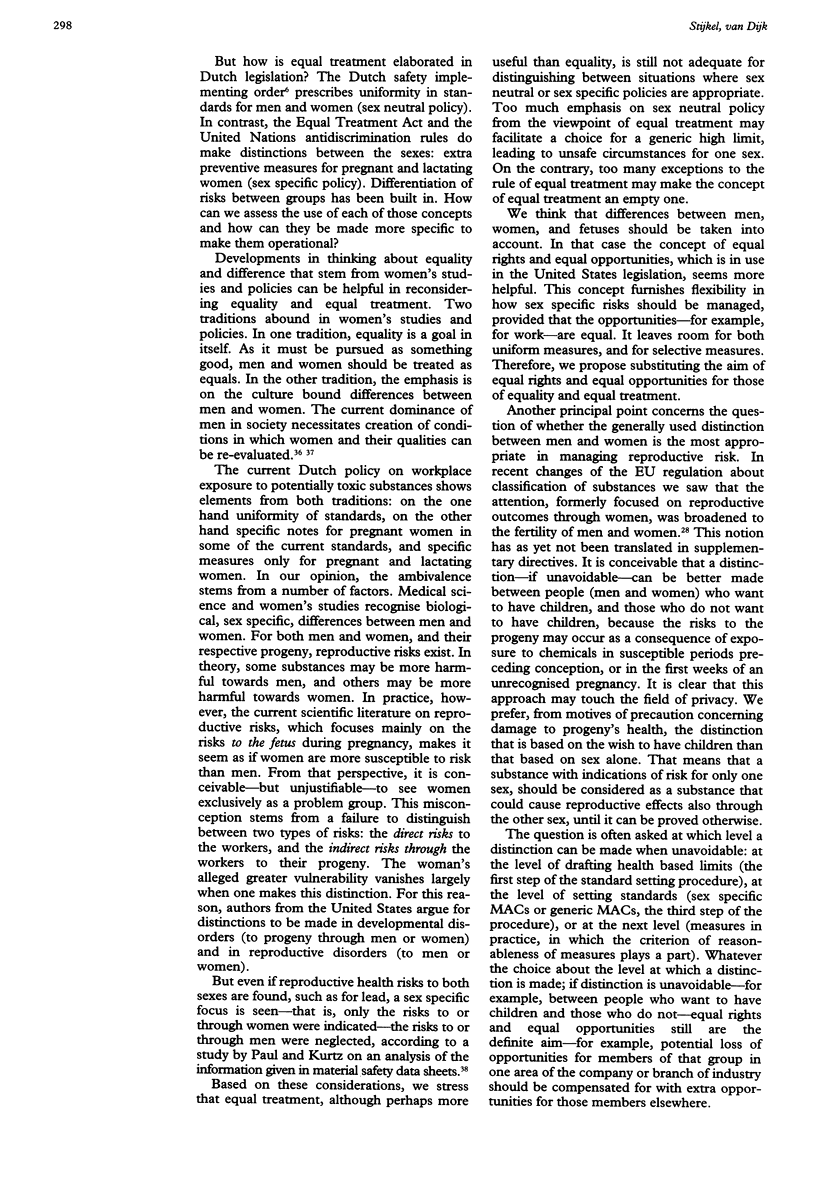
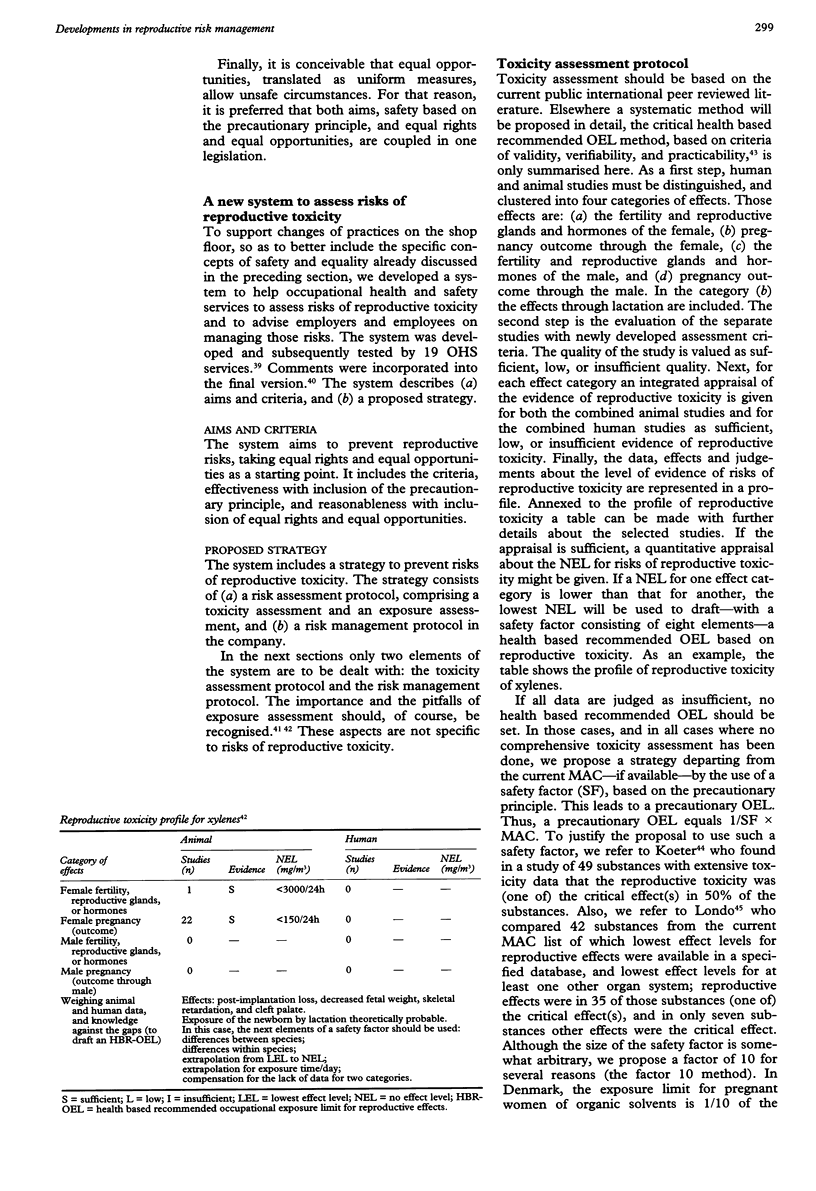
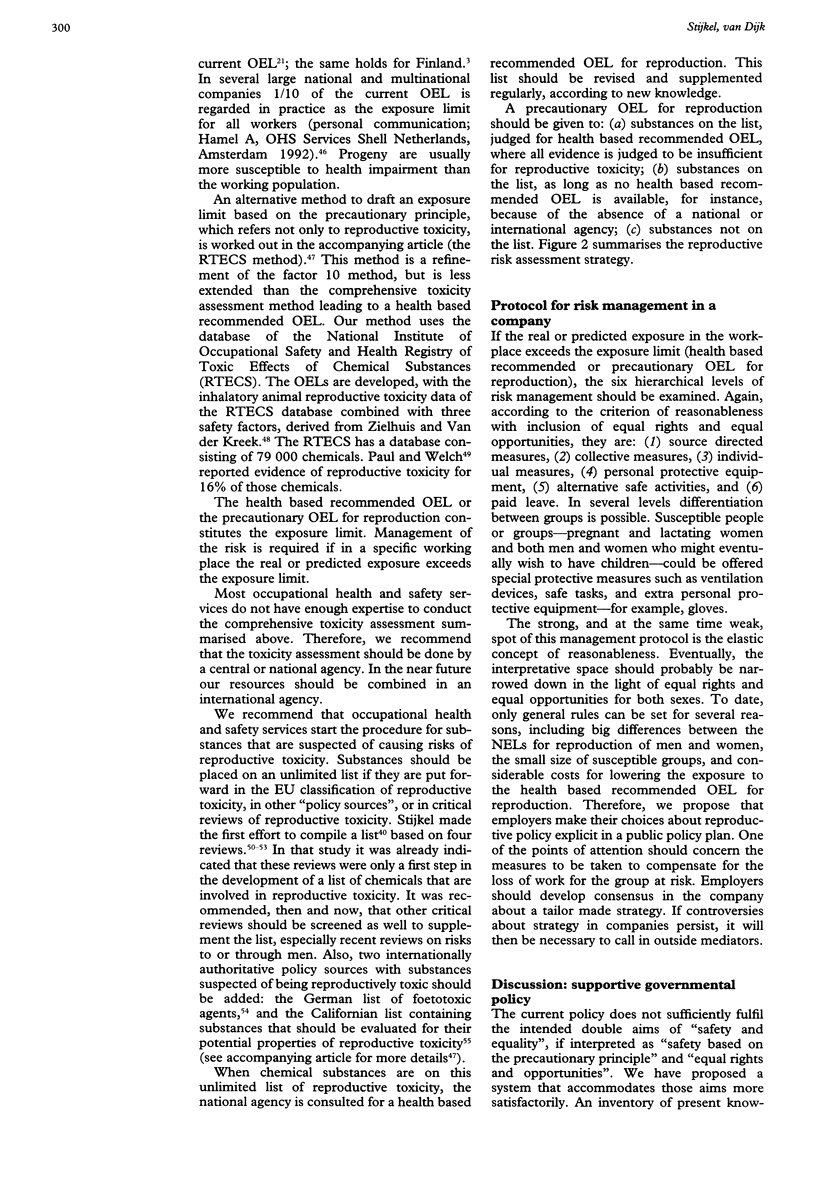
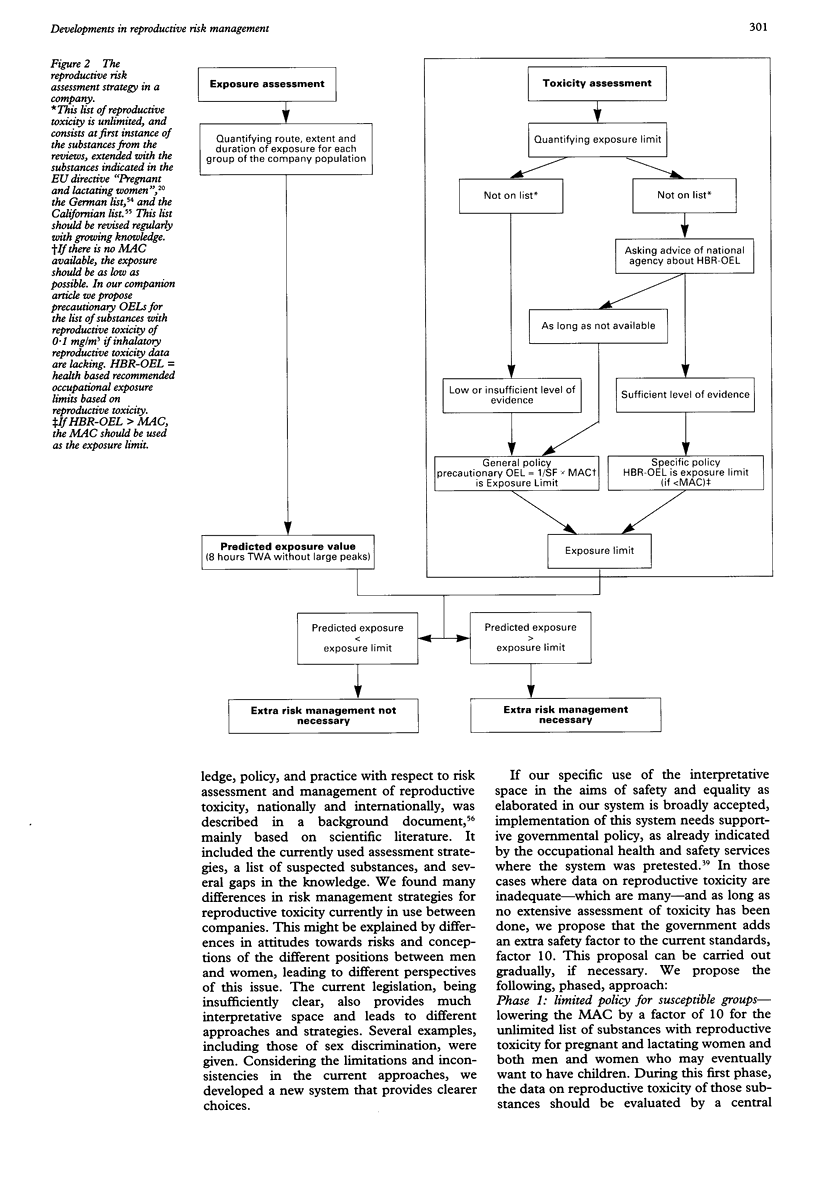
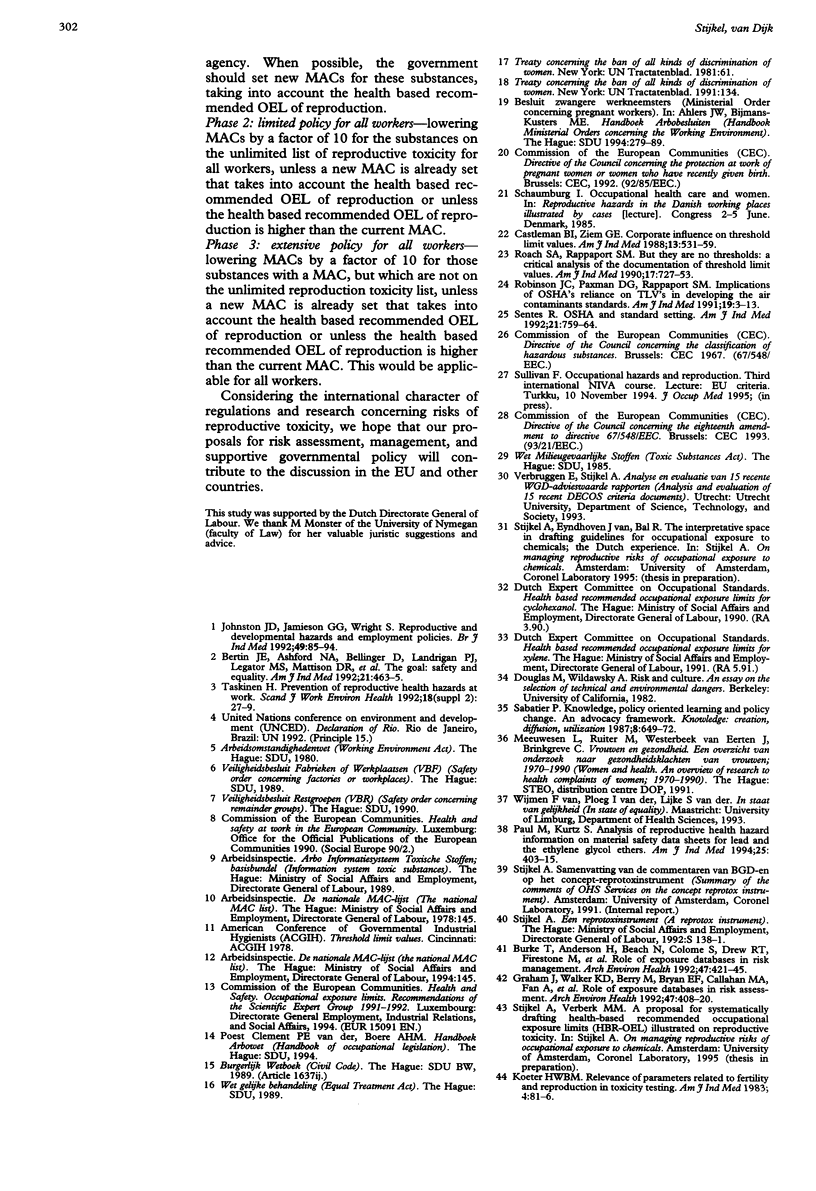
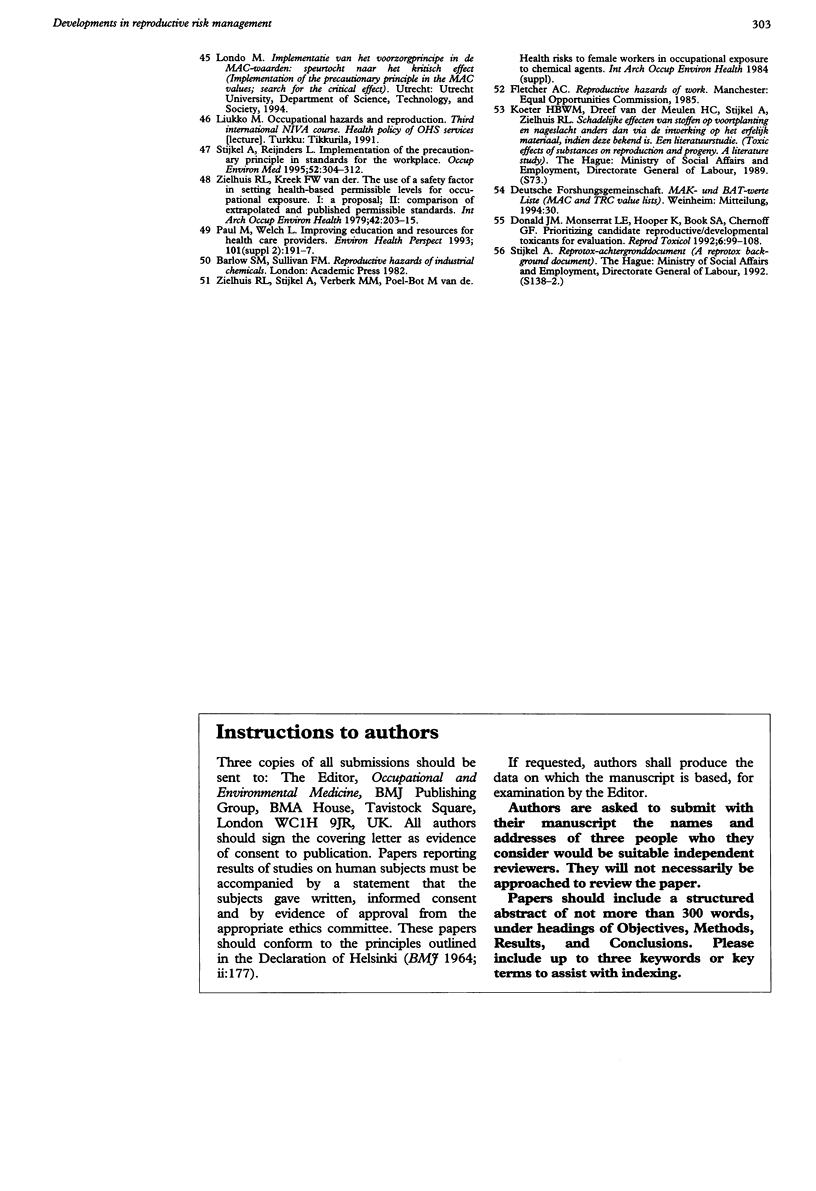
Selected References
These references are in PubMed. This may not be the complete list of references from this article.
- Bertin J. E., Ashford N. A., Bellinger D., Landrigan P. J., Legator M. S., Mattison D. R., McBeath W. H., Rosen J. F., Stellman J. M. The goal: safety and equality. Am J Ind Med. 1992;21(4):463–465. doi: 10.1002/ajim.4700210402. [DOI] [PubMed] [Google Scholar]
- Burke T., Anderson H., Beach N., Colome S., Drew R. T., Firestone M., Hauchman F. S., Miller T. O., Wagener D. K., Zeise L. Role of exposure databases in risk management. Arch Environ Health. 1992 Nov-Dec;47(6):421–429. doi: 10.1080/00039896.1992.9938383. [DOI] [PubMed] [Google Scholar]
- Castleman B. I., Ziem G. E. Corporate influence on threshold limit values. Am J Ind Med. 1988;13(5):531–559. doi: 10.1002/ajim.4700130503. [DOI] [PubMed] [Google Scholar]
- Donald J. M., Monserrat L. E., Hooper K., Book S. A., Chernoff G. F. Prioritizing candidate reproductive/developmental toxicants for evaluation. Reprod Toxicol. 1992;6(1):99–108. doi: 10.1016/0890-6238(92)90027-q. [DOI] [PubMed] [Google Scholar]
- Graham J., Walker K. D., Berry M., Bryan E. F., Callahan M. A., Fan A., Finley B., Lynch J., McKone T., Ozkaynak H. Role of exposure databases in risk assessment. Arch Environ Health. 1992 Nov-Dec;47(6):408–420. doi: 10.1080/00039896.1992.9938382. [DOI] [PubMed] [Google Scholar]
- Johnston J. D., Jamieson G. G., Wright S. Reproductive and developmental hazards and employment policies. Br J Ind Med. 1992 Feb;49(2):85–94. doi: 10.1136/oem.49.2.85. [DOI] [PMC free article] [PubMed] [Google Scholar]
- Koëter H. B. Relevance of parameters related to fertility and reproduction in toxicity testing. Am J Ind Med. 1983;4(1-2):81–86. doi: 10.1002/ajim.1983.4.1-2.81. [DOI] [PubMed] [Google Scholar]
- Paul M., Kurtz S. Analysis of reproductive health hazard information on material safety data sheets for lead and the ethylene glycol ethers. Am J Ind Med. 1994 Mar;25(3):403–415. doi: 10.1002/ajim.4700250308. [DOI] [PubMed] [Google Scholar]
- Paul M., Welch L. Improving education and resources for health care providers. Environ Health Perspect. 1993 Jul;101 (Suppl 2):191–197. doi: 10.1289/ehp.93101s2191. [DOI] [PMC free article] [PubMed] [Google Scholar]
- Roach S. A., Rappaport S. M. But they are not thresholds: a critical analysis of the documentation of Threshold Limit Values. Am J Ind Med. 1990;17(6):727–753. doi: 10.1002/ajim.4700170607. [DOI] [PubMed] [Google Scholar]
- Robinson J. C., Paxman D. G., Rappaport S. M. Implications of OSHA's reliance on TLVs in developing the air contaminants standard. Am J Ind Med. 1991;19(1):3–13. doi: 10.1002/ajim.4700190103. [DOI] [PubMed] [Google Scholar]
- Sentes R. OSHA and standard-setting. Am J Ind Med. 1992;21(5):759–764. doi: 10.1002/ajim.4700210514. [DOI] [PubMed] [Google Scholar]
- Stijkel A., Reijnders L. Implementation of the precautionary principle in standards for the workplace. Occup Environ Med. 1995 May;52(5):304–312. doi: 10.1136/oem.52.5.304. [DOI] [PMC free article] [PubMed] [Google Scholar]
- Taskinen H. Prevention of reproductive health hazards at work. Scand J Work Environ Health. 1992;18 (Suppl 2):27–29. [PubMed] [Google Scholar]
- Zielhuis R. L., van der Kreek F. W. Calculation of a safety factor in setting health based permissible levels for occupational exposure. II. Comparison of extrapolated and published permissible levels. Int Arch Occup Environ Health. 1979 Jan 15;42(3-4):203–215. doi: 10.1007/BF00377774. [DOI] [PubMed] [Google Scholar]


